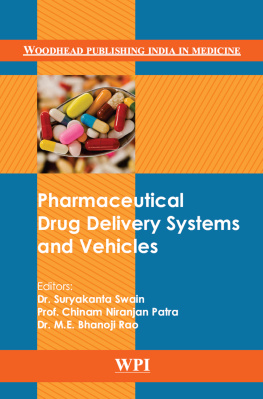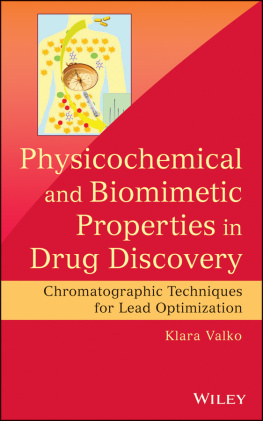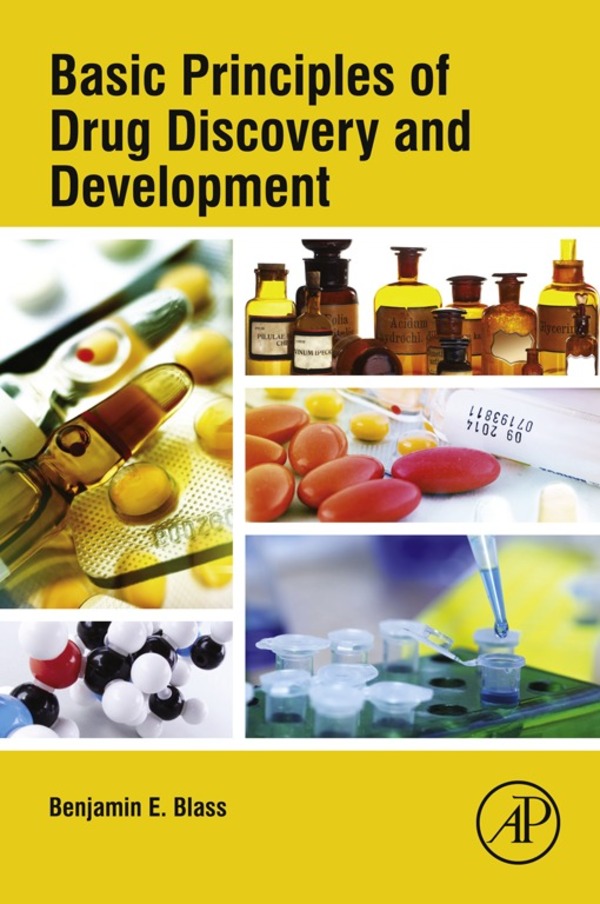Basic Principles of Drug Discovery and Development
Benjamin E. Blass
Temple University School of Pharmacy, Moulder Center for Drug Discovery Research, North Broad Street, Philadelphia, PA, USA
Table of Contents
Copyright
Academic Press is an imprint of Elsevier
32 Jamestown Road, London NW1 7BY, UK
525 B Street, Suite 1800, San Diego, CA 92101-4495, USA
225 Wyman Street, Waltham, MA 02451, USA
The Boulevard, Langford Lane, Kidlington, Oxford OX5 1GB, UK
Copyright 2015 Elsevier Inc. All rights reserved.
No part of this publication may be reproduced or transmitted in any form or by any means, electronic or mechanical, including photocopying, recording, or any information storage and retrieval system, without permission in writing from the publisher. Details on how to seek permission, further information about the Publishers permissions policies and our arrangements with organizations such as the Copyright Clearance Center and the Copyright Licensing Agency, can be found at our website: www.elsevier.com/permissions.
This book and the individual contributions contained in it are protected under copyright by the Publisher (other than as may be noted herein).
Notices
Knowledge and best practice in this field are constantly changing. As new research and experience broaden our understanding, changes in research methods, professional practices, or medical treatment may become necessary.
Practitioners and researchers must always rely on their own experience and knowledge in evaluating and using any information, methods, compounds, or experiments described herein. In using such information or methods they should be mindful of their own safety and the safety of others, including parties for whom they have a professional responsibility.
To the fullest extent of the law, neither the Publisher nor the authors, contributors, or editors, assume any liability for any injury and/or damage to persons or property as a matter of products liability, negligence or otherwise, or from any use or operation of any methods, products, instructions, or ideas contained in the material herein.
ISBN: 978-0-12-411508-8
British Library Cataloguing in Publication Data
A catalogue record for this book is available from the British Library
Library of Congress Cataloging-in-Publication Data
A catalog record for this book is available from the Library of Congress
For information on all Academic Press publications visit our website at http://store.elsevier.com/
Printed and bound in the USA
Dedication
Sir Isaac Newton, one of the greatest scientists of his time, wrote If I have seen further it is by standing on ye shoulders of Giants. Although he was almost certainly referring to his scientific achievements, the underling concept of learning from our forbearer is true in any endeavor. Indeed, this concept can be further extended to include those who are there in the present day, supporting the activities of an individual as he or she attempts to accomplish that which they view as important. With this thought in mind, I have dedicated this book to the scientists who came before me, those who mentored me, and those who work with me on a daily basis. In addition, and perhaps more importantly, this text is dedicated to the loving and supportive family that has helped me become the person that I am today. Special thanks are offered to my mother, father, sister, brother, my three children, and of course, my wife Kathleen. These are the giants on whose shoulders I have stood upon.
Foreword
The last three decades have witnessed a revolution in the drug discovery and development process. Medicinal chemistry and in vitro screening that were once major bottlenecks in the process of identifying novel therapeutics have been dramatically accelerated through the incorporation of automation and the development of enabling technologies such as recombinant DNA and transfection technology. High-throughput screening (HTS), parallel synthesis, and combinatorial chemistry have facilitated the synthesis and biological evaluation of large numbers of potentially useful compounds. These activities, in turn, have generated vast amounts of data that can be analyzed to develop structureactivity relationships and structureproperty relationships useful for the optimization of lead compounds. At the same time, new techniques, technological advances, and a greater understanding of the importance of pharmacokinetics, animal models, and safety studies have dramatically altered how new molecules are selected for clinical study. Design strategies of clinical trials, biomarkers, translational medicine, the regulatory landscape, intellectual property rights, and the business environment have also changed dramatically over the course of the last 30 years.
The complexities of the drug discovery and development process cannot be overstated, nor can the wide range of expertise required for the successful development of new, marketable therapeutics. In order to thrive in this every changing landscape, individuals interested in a career in the pharmaceutical industry or related fields must be more than simply experts in their chosen field of study. They must also have an understanding of the numerous, overlapping fields of their colleagues. Basic Principles in Drug Discovery and Development has captured the critical information on the disparate processes, technologies, and expertise required for modern drug discovery and development and presents it in a logical and concise manner for students, practicing scientists, and nonscientists with an interest in the pharmaceutical industry. Dr Benjamin E. Blass, an experienced educator and scientist with foundational knowledge in medicinal chemistry, drug design, biological targets, and over 20 years of experience in industrial and academic drug discovery and development, provides a comprehensive account of the many functions involved in drug discovery and development, from initial medicinal chemistry conceptualization and in vitro biological evaluation to clinical trials and beyond.
There are many aspects of this book that will help practicing scientists, graduate students, and future drug discovery researchers to develop a strong foundation in the concepts that govern the multidisciplinary process of drug discovery. Through this unique text, they will acquire an understanding of key aspects of drug discovery and development. The organization of the subject material was chosen to allow the readers to incrementally increase their knowledge in the wide range of disciplines required to identify new, marketable therapeutic agents. The book is thoroughly written and includes 13 chapters with over 300 figures and 900 references. Throughout the text, the reader will become familiar with more than 100 drugs and clinical candidates that exemplify important theories and practices.
Each chapter contains examples of drugs pertaining to the material in the chapter. The opening chapter provides an overview of drug discovery and development. This serves as the foundation for the following 10 chapters which describe the various functions involved in drug discovery and development. The early phases of drug discovery are described in detail through discussions of important topics such as target identification, target validation, lead identification, multidimensional lead optimization, pharmacokinetics, preclinical pharmacodynamics, and early toxicology. This is followed by discussions of preclinical activities, clinical trial design, biomarkers, and translational medicine. Each chapter builds on the previous chapters and this approach provides the readers with an integrated view of the various, multidisciplinary functions required for the drug discovery and development process.






